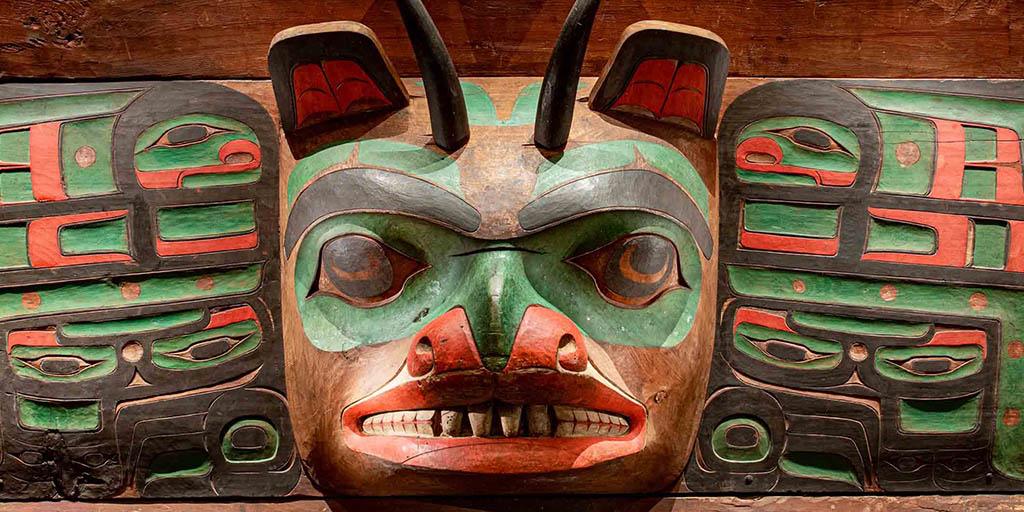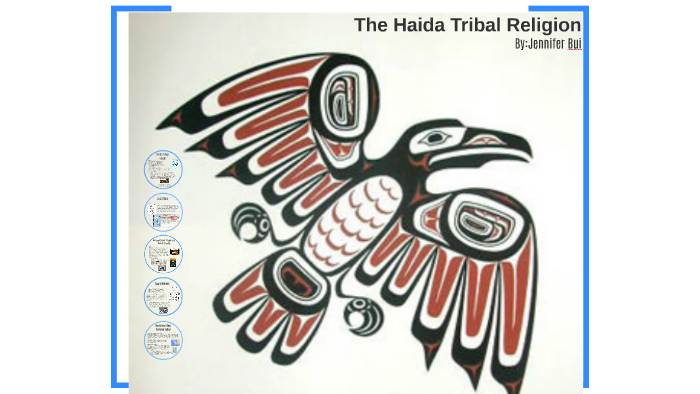
Whispers from the Mist: Unveiling the Enduring Spiritual Practices of the Haida Nation
HAIDA GWAII, British Columbia – On the edge of the world, where the ancient cedar forests meet the tempestuous Pacific, lies Haida Gwaii, the "Islands of the People." Shrouded in mist and legend, this archipelago is more than just a geographic location; it is the spiritual heartland of the Haida Nation, a place where the veil between the physical and spirit worlds seems remarkably thin. For millennia, the Haida people have cultivated a profound and intricate spiritual practice, one deeply rooted in their environment, ancestry, and a rich cosmology that continues to resonate powerfully in the modern era.
At its core, Haida spirituality is a holistic way of being, a constant dialogue with the natural world and the unseen forces that animate it. It is not a set of dogmas or a codified religion in the Western sense, but rather a living, breathing tradition woven into every aspect of life – from art and governance to daily subsistence and community gatherings.

"For us, the land isn’t just a place to live; it’s an extension of our very being, a living relative," says Gidansda (Guujaaw), a prominent Haida Elder and former President of the Council of the Haida Nation. "The trees, the salmon, the ocean – they are our teachers, our providers, and our kin. Our spirituality flows directly from that relationship of respect and reciprocity."
The Land as Teacher and Temple
The breathtaking landscape of Haida Gwaii is the ultimate classroom and sanctuary for the Haida. Every inlet, every ancient tree, every salmon-filled river holds stories, lessons, and spiritual significance. The concept of Yahguudang – respect – underpins all interactions with the natural world. It is a deep reverence for the interconnectedness of all life and a recognition that humans are but one thread in a vast, intricate tapestry.
The mighty cedar tree, for instance, is considered the "Tree of Life." Its bark provides clothing and baskets, its wood forms monumental totem poles, longhouses, and ocean-going canoes. But beyond its utility, the cedar holds spiritual power, embodying strength, resilience, and the spirit of the forest. Similarly, the salmon, returning annually in vast numbers, are seen as sacred beings, embodying abundance and the cycle of life and death. The Haida understood that their survival depended on maintaining balance, taking only what was needed, and giving thanks for every gift from the land and sea. This ancient ecological wisdom is a cornerstone of their spiritual practice.
A Universe of Transformation: Cosmology and Myth
Central to Haida spirituality is a vibrant cosmology populated by powerful supernatural beings, many of whom possess the ability to shapeshift between human and animal forms. The most prominent of these is the Raven, a complex and often contradictory figure. He is the trickster, the culture hero, and the creator, credited with bringing light to the world, releasing the first humans from a clam shell, and shaping the islands.
"The Raven isn’t just a bird; he’s the embodiment of curiosity, chaos, and creation," explains renowned Haida artist Robert Davidson. "His stories teach us about human nature, about the consequences of our actions, and about the mysteries of the universe. They are not just myths; they are our spiritual texts."
Alongside Raven, other significant supernatural beings include the Eagle, representing peace and friendship; the Bear, symbolizing strength and introspection; the Orca (Blackfish), guardian of the seas; and the Thunderbird, master of the skies and storms. These beings are not distant deities but active participants in the world, influencing human lives and often appearing in dreams or visions. The ability to transform, to move between worlds, is a powerful motif, reflecting the fluidity and interconnectedness of existence.

Ancestors: The Living Past
For the Haida, the past is never truly past. Ancestors are not merely remembered; their spirits are believed to remain present, offering guidance, protection, and wisdom. This deep reverence for those who came before is a vital component of their spiritual practice. Lineage and clan systems (Eagle and Raven) are paramount, defining identity and responsibilities.
Totem poles, perhaps the most iconic expression of Haida art, are not simply decorative. They are monumental spiritual and genealogical records, telling stories of ancestral journeys, clan histories, and encounters with supernatural beings. Each carving is imbued with meaning, power, and the spirits it represents, standing as a testament to the enduring connection between the living and the dead. Through oral histories, songs, and ceremonies, ancestral knowledge and spiritual truths are passed down through generations, ensuring the continuity of the Haida way of life.
Skaaga: Mediators of the Spirit World
Historically, the Skaaga (shamans) played a crucial role in Haida spiritual life. These powerful individuals were believed to possess unique abilities to communicate with the spirit world, heal the sick, predict the future, and mediate between humans and supernatural beings. Their training was rigorous, often involving solitary retreats, fasting, and intense spiritual experiences. They were distinguished by their regalia, which often included rattles, masks, and charms infused with spiritual power.
While the formal role of the Skaaga diminished under colonial pressures, the underlying principles of spiritual healing, dream interpretation, and seeking guidance from the unseen realm persist. Today, Elders and cultural knowledge keepers continue to serve as spiritual guides, drawing upon generations of accumulated wisdom to advise and support their communities.
Art as Spiritual Language
For the Haida, art is not merely aesthetic; it is a profound spiritual language, a visual manifestation of their worldview and beliefs. Every line, every form, every carved figure tells a story, embodies a spirit, or expresses a spiritual truth. Masks, carved from wood and adorned with paint and natural materials, are transformative objects used in ceremonies to embody spirits and ancestors, allowing the wearers to transcend their human form.
"Our art isn’t just beautiful; it’s a language, a repository of our history, our laws, and our spiritual understanding," explains Gwaai Edenshaw, a contemporary Haida artist and carver. "When I carve, I’m not just shaping wood; I’m connecting to my ancestors, to the stories, and to the spirits that guide my hand. It’s a deeply spiritual act."
From intricate argillite carvings to vibrant button blankets worn during ceremonial dances, Haida art is a dynamic medium through which spiritual power is invoked, stories are preserved, and cultural identity is reinforced.
Ceremonies of Connection and Renewal: The Potlatch
The Potlatch stands as the most significant ceremonial expression of Haida spiritual and social life. More than just a feast, the Potlatch was a complex and multifaceted event that served as a cornerstone of the community. It was a formal public display of wealth and status, but its deeper spiritual purpose was to validate rights, transfer names and titles, commemorate the dead, and affirm social structures in the presence of witnesses. It was a time for elaborate feasts, powerful dances, sacred songs, and the exchange of gifts, all designed to maintain balance and reciprocity within the community and with the spirit world.
The Potlatch was outlawed by the Canadian government in 1884, a direct attack on Indigenous spiritual and cultural practices. For decades, it was forced underground, but never truly extinguished. Its eventual repeal in 1951 marked a turning point, and today, the Potlatch has seen a powerful resurgence, adapted for modern times but retaining its core spiritual significance. These revitalized ceremonies are a testament to the resilience of Haida spiritual practices and their commitment to cultural continuity.
Resilience and Revival in the Modern Era
The Haida Nation, like many Indigenous peoples, endured immense suffering and cultural suppression under colonialism. Residential schools systematically attempted to strip children of their language, traditions, and spiritual beliefs. Diseases decimated populations, and resource extraction threatened their ancestral lands. Yet, despite these profound challenges, Haida spiritual practices have not only survived but are experiencing a powerful revitalization.
Today, there is a concerted effort to reclaim and strengthen traditional knowledge. The Haida language, Xaad Kil, is being taught to new generations. Young artists are learning from Elders, perpetuating the ancient art forms. Cultural centres and museums on Haida Gwaii are hubs for learning and sharing, ensuring that the spiritual wisdom of the ancestors remains vibrant and accessible.
"Despite everything, our spirit remains strong. We are bringing back what was taken, and we are teaching our children the old ways, so they can carry them forward," states Nika Collison, Executive Director of the Haida Gwaii Museum. "It’s not about living in the past; it’s about drawing strength from our roots to navigate the present and shape the future."
The spiritual practices of the Haida Nation are a living testament to the enduring power of culture, the profound connection between people and place, and the unwavering human spirit. From the ancient mists of Haida Gwaii, their whispers continue to echo, guiding their people with wisdom drawn from the land, the ancestors, and the timeless stories of a universe teeming with spirit.


